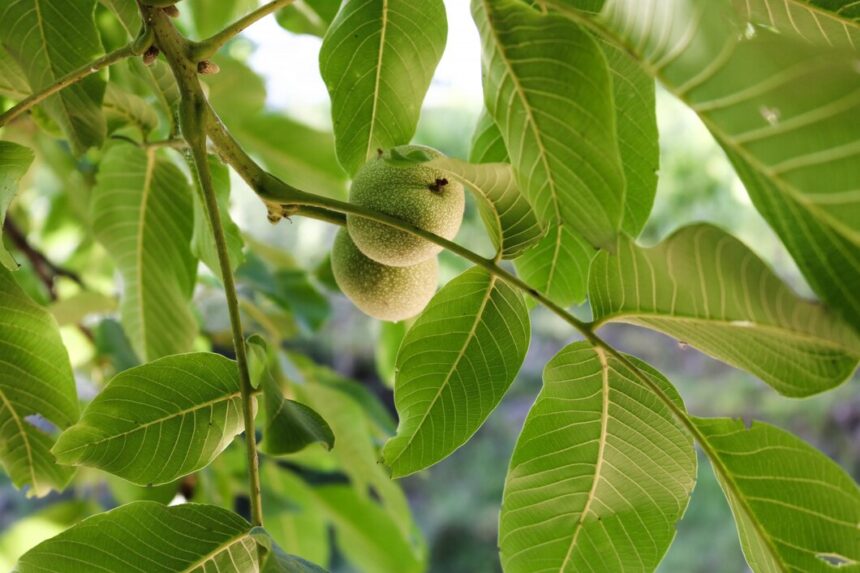Walnut blight, caused by the bacterium Xanthomonas campestris pv. juglandis, can severely impact walnut trees if not detected early. Here are ten early signs to watch for:
- Leaf Spots: Small, dark, water-soaked spots on leaves are often the first indication. These spots can expand, becoming brown or black, and eventually lead to leaf drop.
- Leaf Margins: The edges of infected leaves may turn brown and crispy. This symptom often follows the appearance of spots.
- Fruit Lesions: On developing walnuts, you might notice dark, sunken lesions or spots. These can cause premature fruit drop and affect nut quality.
- Wilted Leaves: As the disease progresses, leaves may become wilted and dry out, even in the absence of drought conditions.
- Dieback: The tips of branches may start to die back, a sign that the blight is affecting the tree’s vascular system.
- Gummy Exudate: A sticky, gummy substance may ooze from infected branches or nuts. This is a sign of bacterial activity within the tree.
- Blackened Twigs: Look for blackened or scorched twigs, which can be indicative of severe infection.
- Reduced Growth: Trees affected by walnut blight often exhibit stunted growth compared to healthy trees.
- Scabby Bark: In advanced stages, the bark may develop scabby, sunken areas, which can impact the tree’s overall health.
- Poor Nut Development: Nuts may appear underdeveloped or malformed if the blight affects them. This can result in lower yields and poorer quality harvests.
Regular monitoring and early intervention can help manage walnut blight effectively. If you suspect your walnut trees are affected, consult with a local agricultural extension service or plant pathologist for proper diagnosis and treatment recommendations.
Join 'Farmers Mag' WhatsApp Channel
Get the latest Farming news and tips delivered straight to your WhatsApp
CLICK HERE TO JOIN






